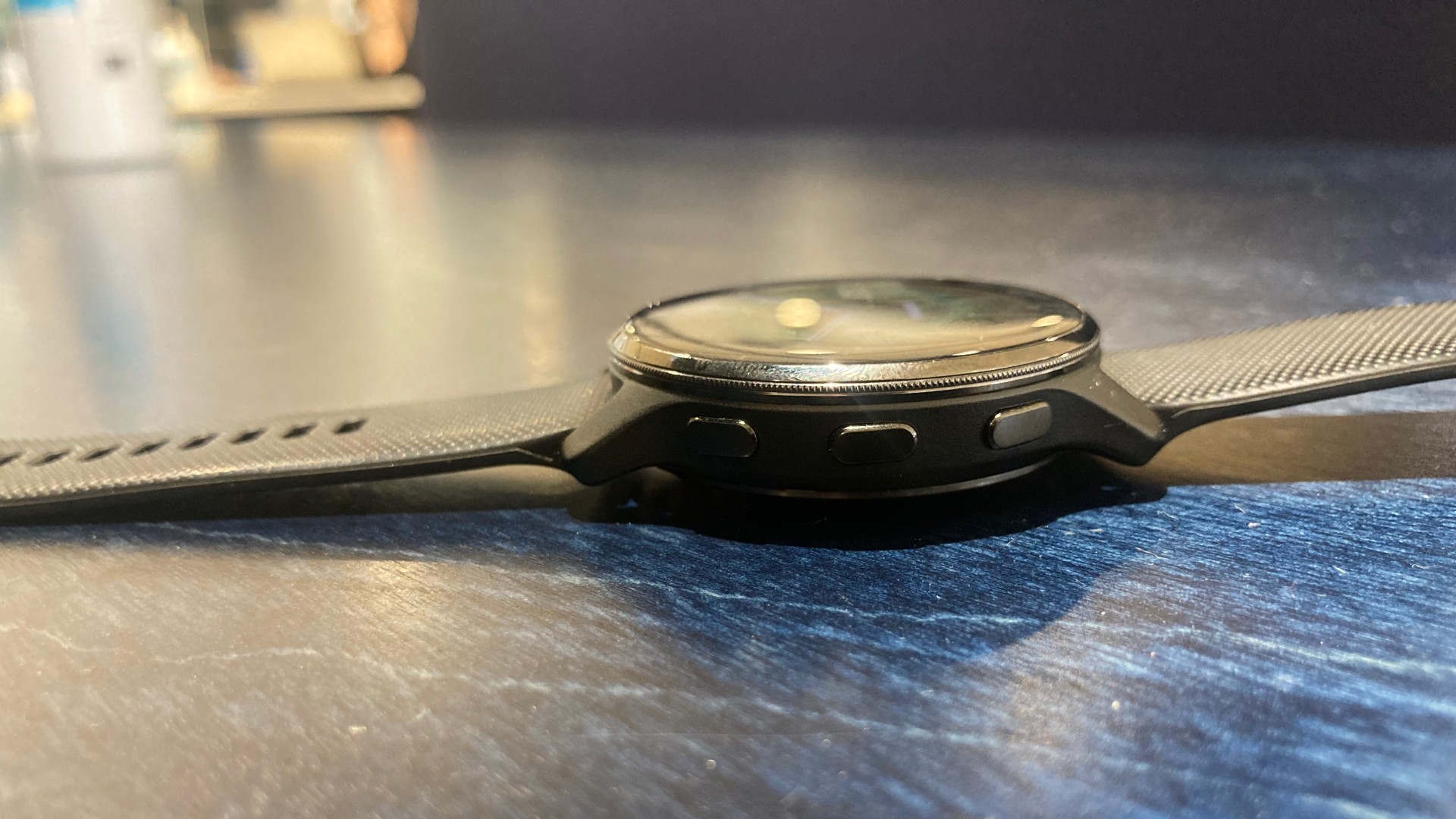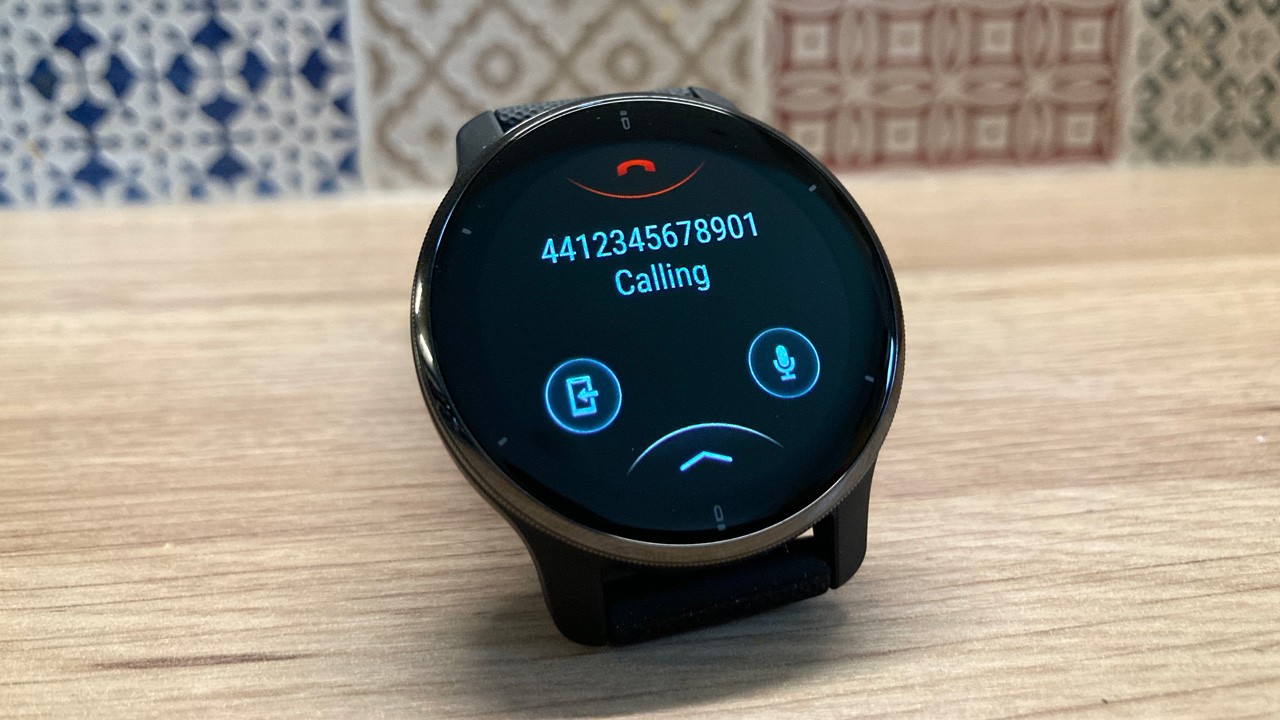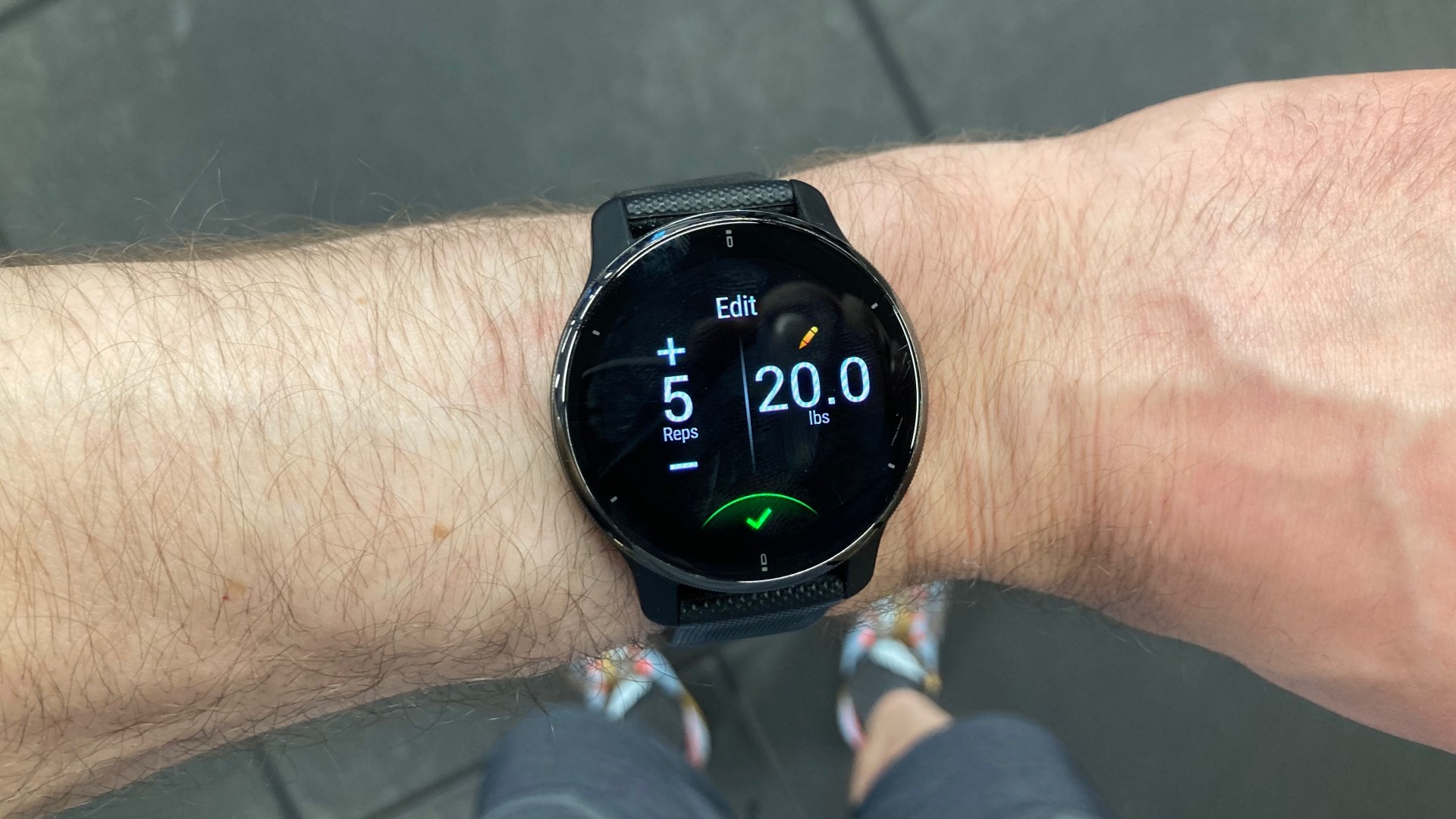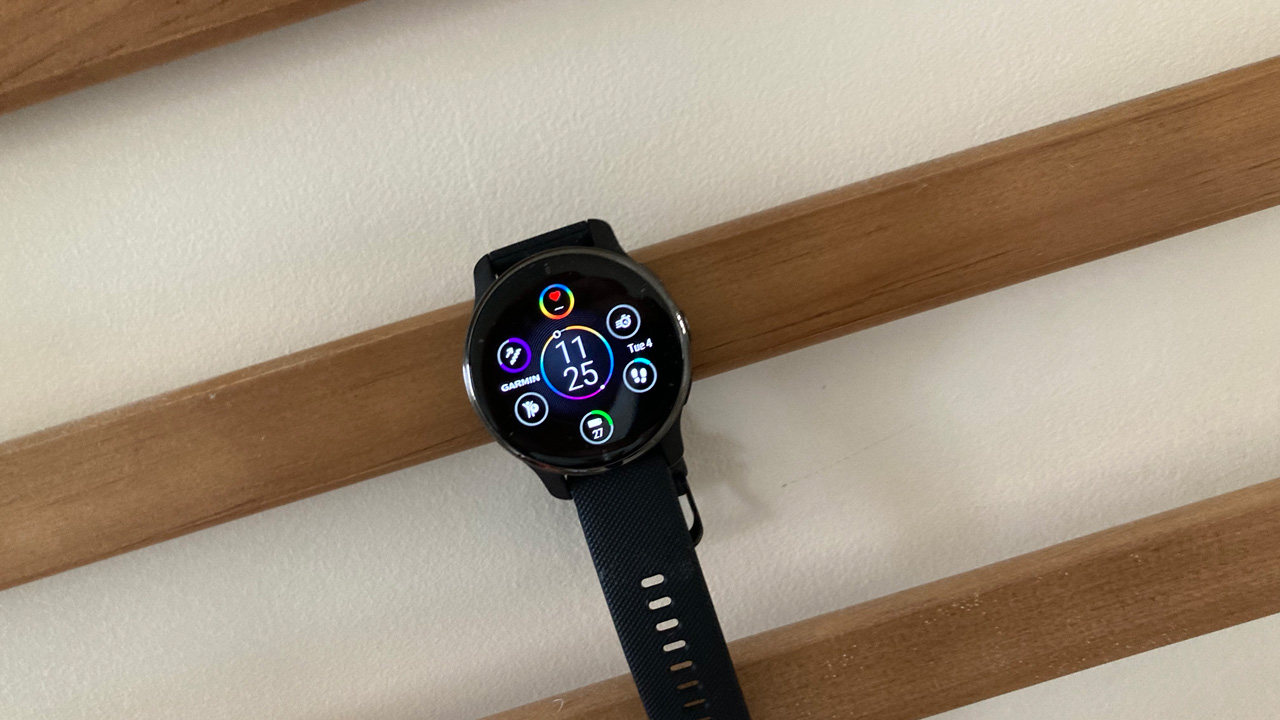Our Verdict
Garmin’s top-of-the-line fitness smartwatch does an excellent job of tracking your health and activity, has a vibrant, responsive touchscreen, and is light and stylish. While it can’t compete with the app stores on smartwatches made by phone manufacturers, that’s a small price to pay, and it gets music streaming right – the most important smart feature in my book.
For
- Light, comfortable and stylish
- Responsive touchscreen
- Extensive exercise tracking
Against
- Missing more advanced health tracking
- Limited app store
- More expensive than peers
You can trust Coach
The Venu 2 Plus marks a confident move from Garmin as it has priced its best smartwatch at the top end of the best smartwatches. It also costs more than Garmin’s own Venu 2, though the only real change is that the 2 Plus comes with a built-in mic and speaker so you can operate a voice assistant from your watch and stream phone calls through your smartphone.
On paper, I wasn’t convinced, but after wearing it for five months I’ve steadily grown more impressed by the features. It may be expensive but, as with most Garmins, if you can afford it you won’t be disappointed.
NEWS FLASH: New ECG App Added To Garmin Venu 2 Plus In The US (24th January 2023)
Garmin Venu 2 Plus Review: Price And Availability
The Garmin Venu 2 Plus was announced on 4th January 2022 and costs $449.99 in the US and £399.99 in the UK. That’s more than the Samsung Galaxy Watch 4 Classic and the starting price for the Apple Watch Series 7.
The Garmin Venu 2 Plus can be bought direct from Garmin US and Garmin UK, and a range of third-party retailers.
The similar Venu 2 starts at $399.99/£299.99, although you’ll pay more for models with different materials and designs.
Design

The Venu 2 Plus comes in one case size, 43mm, unlike the Venu 2, which is available in 40mm and 45mm size cases. It looks a lot sleeker on the wrist and a friend who wears the chunky Garmin Forerunner 645 eyed it up eagerly.
Sign up for workout ideas, training advice, reviews of the latest gear and more.
I strapped it on after reviewing the Huawei Watch GT 3 (3oz/84g), and the Venu 2 Plus (1.8oz/51g) felt notably lighter and more comfortable.
The display is an AMOLED touchscreen (416 x 416 pixels large), and it’s great. It responds quickly to swipes and presses, and is readable in all conditions – even bright sunlight. There are always-on modes, although during activity the screen dims and outside of activity parts of the watch face go dark, leaving just the time. In the end, I chose to turn this off because the raise-to-wake gesture worked quickly and reliably.

The Venu 2 Plus has three buttons compared with two on the Venu 2. The extra middle button offers two shortcuts with a press or hold, and I used them to jump to the music player and voice assistant.
Garmin offers a range of quick-release 20mm straps (nylon, suede, leather and Milanese) to change the look of the Venu 2 Plus. If that idea appeals, I’d recommend buying the cream gold bezel with ivory case or silver bezel with powder grey case, which I think will be more versatile. The slate bezel and black body, which I tested, suits the black strap and not much else. The silicone band it came with was comfortable to wear all day, during exercise and at night, and it has a standard clasp.
The Venu 2 Plus has a waterproof rating of 5ATM, making it safe to wear while swimming, and it’s well protected from splashes, sweat, showering and rain.
How I Tested The Garmin Venu 2 Plus
I wore the Venu 2 Plus most of the time over a five-month period. I used it to track running, cycling to work, strength workouts, yoga, group exercise classes and swims. I worked my way through all the health features, explored the app store and tried the smart features.
Smart Features

The first thing to say about the Garmin Venu 2 Plus is that all the features are available on smartphones from most major manufacturers, with Honor and Huawei the notable exceptions (here’s Garmin’s list of incompatible phones).
The distinguishing features of the Venu 2 Plus are a microphone and a speaker that you use for your smartphone’s voice assistant and to make voice calls. The idea of being able to use my watch to make phone calls didn’t initially grab me as a concept: I may be old, but not so old that I prefer a call to a message. However, to my surprise, on a couple of occasions answering a call on my watch turned out to be convenient. On each occasion I was in my house or a parked car, but I could hear the person on the other end clearly and they couldn’t tell I was using a watch rather than my phone by the sound quality.
The mic picks up sound clearly enough for the voice assistant, too, although it’s a toss-up which takes longer – retrieving my phone from my pocket or waiting for the slight delay while the Venu 2 Plus triggers Siri. If you keep your phone in a bag or out of reach, it will be a more welcome feature.

But to my mind, Garmin’s killer smartwatch feature is music. There’s capacity for 650 songs and it can sync with paid-for Spotify and Amazon Music accounts, as well as sync playlists to stream to Bluetooth headphones away from your phone. It’s light years ahead of Fitbit, the other major platform-agnostic smartwatch, and Huawei in this regard. It’s also easy to switch to controlling music on your phone when that’s more convenient.
You can set up Garmin Pay for contactless payments, although in the UK the only high-street bank to have signed up to the service is Santander (check Garmin Pay participating banks to see if your bank has signed up). If contactless payments on your watch are desirable, Apple and Samsung watches are better bets.
The selection of apps is limited compared with Apple and Samsung, but there are a wealth of watch faces, including animal adventure ones to placate (my) children and a parkrun barcode app, which scanned successfully.
Notifications are easy to read and scroll through, and you can choose to show all notifications, calls only, or calls and texts.
Exercise Tracking

The exercise tracking is great, but suffers when compared with Garmin’s dedicated running and multisport watches, especially those which cost the same or less. But before I detail what you don’t get, it’s worth covering all that you do because, for most people, the Venu 2 offers more than enough.
There are a range of sports to track, and having worn it for so long I can attest to the fact that these aren’t just a bunch of labels to categorise duration and heart rate metrics. Yoga, for instance, adds respiration rate. There’s the options of Hike and Walk, and the former uses a barometric altimeter to track elevation change.
The Garmin Venu 2 Plus is also a swimming watch with a waterproof rating of 5ATM. The touchscreen locks in the water and can show a combination of interval time, interval distance, interval lengths and total time elapsed. The minimum pool length is 15 yards (13 metres) and you can add a custom length along with choosing from a list of standard pool sizes. You can also set the watch to alert you when you’ve swum a certain distance or for a certain time, and turn on auto rest. It’s a decent set of features and it counted my lengths accurately the few times I swam wearing it. Once you’ve synced your swim to the app you can see more information about your pace, stroke rate and SWOLF, although it doesn’t attempt to automatically recognise your stroke.
- The best swimming watches for the pool

I was also impressed with the strength training feature, which allows you to adjust the automatic rep counting and input the weight you lifted. Most importantly, the use of the lap button means you can be strict with your rest periods – which came in handy when following this dumbbell workout plan. It will also attempt to recognise the exercise you’re doing, and while this was right only around 50% of the time, that could well be down to dodgy form on my part. If you’re keen to maintain a complete training log, using the web browser is the easiest way to edit and add exercises after the fact.
There are even more strength training features to explore in the app, including setting your one-rep max for barbell exercises. That’s beyond my expertise, but points to the depth of features here.
There’s also a HIIT workout mode that provides shortcuts to AMRAP, EMOM and Tabata timers, as well as letting you set custom work and rest intervals on the watch. It’s smartly done and useful.
Throughout, I found the hardware – heart rate monitor and GPS – returned sensible and usable readings for running and cycling. If you’re after the greatest accuracy you’d probably be happier with the advanced training features of multisport watches anyway. That said, you can easily connect a heart rate chest strap to the Venu 2 to improve the readings when running intervals.
Speaking of which, the Venu 2 Plus includes Garmin Coach, a set of training plans for running and cycling. The running plans are for 5K, 10K and half marathon distances and are common across Garmin devices. I’ve used part of the half marathon training plan on another Garmin device and the mix of sessions across the week was doing a great job of improving my running – then another lockdown hit, my target race was cancelled and that put paid to that (que sera sera). It’s an excellent feature for beginners and more advanced runners alike – I was on track to run a 1hr 30min half marathon (and, I suspect, well under that, too), but it will coach you to your first 5K too at a pace you can handle.
The main exercise feature I missed, which you’ll find on similarly priced watches like the Garmin Forerunner 745 and now regularly discounted Fenix 6 Pro, is training analysis. This rates the effect of your running and makes sure you’re hitting a productive mix of low aerobic, high aerobic and anaerobic sessions. Not everyone is a fan of this feature (no one likes being told all the exercise they’re doing is unproductive), but it’s helped me keep my easy runs easy.
In truth, most people won’t need (or enjoy) that feature, and the Venu 2 Plus supplies exercise tracking that blows Fitbit and others out of the water. If you’re looking for a fitness smartwatch with an emphasis on fitness, you won’t be disappointed by the Venu 2 Plus, no matter your preferred form of exercise.
Health Tracking
On one hand, Garmin has fallen behind in the health tracking stakes, failing to integrate a new generation of sensors that can take ECGs (Apple, Withings, Samsung, Fitbit) and skin temperature readings (Fitbit, Withings). On the other hand I can’t see much point in these sensors and while they may be useful, even life-saving in a handful of cases, they lack mass application in my opinion.
The Venu 2 Plus can measure the oxygen saturation of your blood like other fitness smartwatches, but not only do fluctuations in readings tend to be minor and uninteresting, major fluctuations are probably down to the limitations of the technology.
The health features Garmin includes are useful and Body Battery is my favourite. It provides a rating out of 100 to show how much energy you have. Attempting to follow a running training plan, and testing various devices and workout apps, and cycling to work is a tricky balance to get right. Being able to see when I’m worn down helps guide decisions like when to skip the beers for a couple of nights, or get an early night, or work from home and let my legs recover.

Body Battery relies on sleep tracking and I’ve seen great improvements on that front from Garmin. In the past, Garmin devices would struggle to distinguish between lying in bed reading and going to sleep, but those problems seem to have been resolved and sleep and wake-up times were accurate. The information you get has also been improved, with an easy-to-understand sleep score out of 100 and more detail breaking down time spent in light, deep and REM sleep.
There are also breathing exercises to do and respiration tracking to see if you successfully managed to slow your breathing down. There’s also a stress tracker, which would occasionally give me a notification that I was more stressed than normal and offer to open a breathing exercise. While I was too busy to take up the offer, I find explicit notifications of what I implicitly know useful for taking practical steps to keep stress in check.
At any point you can take a two-minute Health Snapshot, which tracks averages of your heart rate, SpO2, respiration rate, stress and heart rate variability. While it didn’t tell me much, it’s an interesting idea and is intended as a record to show your physician.
Battery Life
The Garmin Venu 2 Plus is quoted as having up to nine days of battery life and that tallied with my experience. It’s among the better-performing smartwatches, only edged by the likes of Huawei, and certainly beating the one-day battery life of the Apple Watch.
It also offers up to 24 hours of GPS tracking and eight hours of GPS and music, plenty of time for anyone to complete a marathon to the sounds of their favourite running playlist. That also means the forgetful only have to delay a run by 10 minutes to get enough juice for a basic run. I started charging my watch for a lunch-hour run at 1.04pm and it had gone from 1% to 15% by 1.13pm when I unplugged and headed out. I was back by 2pm and the battery had only dropped to 13%.
Is the Garmin Venu 2 Plus Worth It?

The Garmin Venu 2 Plus is a great watch, but it faces stiff competition, especially from the original Venu 2, which retains almost all of the same features. Personally, I’d save the money and do without the additional mic and speaker – they’re nice to have, but not much more than that.
I also don’t mind chunkier-looking watches and prefer the advanced training analysis on the Forerunner range and the colour maps on the Fenix 6 Pro, which after the launch of the Fenix 7, should be discounted to the same price as the Venu 2 Plus or even lower.
Compared with the other best fitness smartwatches, the Venu 2 Plus holds its own and anyone who is more concerned with the fitness aspect rather than the smartwatch should seriously consider it. While the Apple Watch Series 7’s third-party apps enhance the experience, I’ve been taken aback by its lack of sports tracking features (although it’s due for improvement in the next operating system update).

Jonathan Shannon was the editor of the Coach website from 2016 to 2024, developing a wide-ranging experience of health and fitness. Jonathan took up running while editing Coach and used the training plans on the site to run a sub-40min 10K, 1hr 28min half marathon and 3hr 6min marathon. He’s an advocate of cycling to work and is Coach’s e-bike reviewer, and not just because he lives up a bit of a hill. He also reviews fitness trackers and other workout gear.

